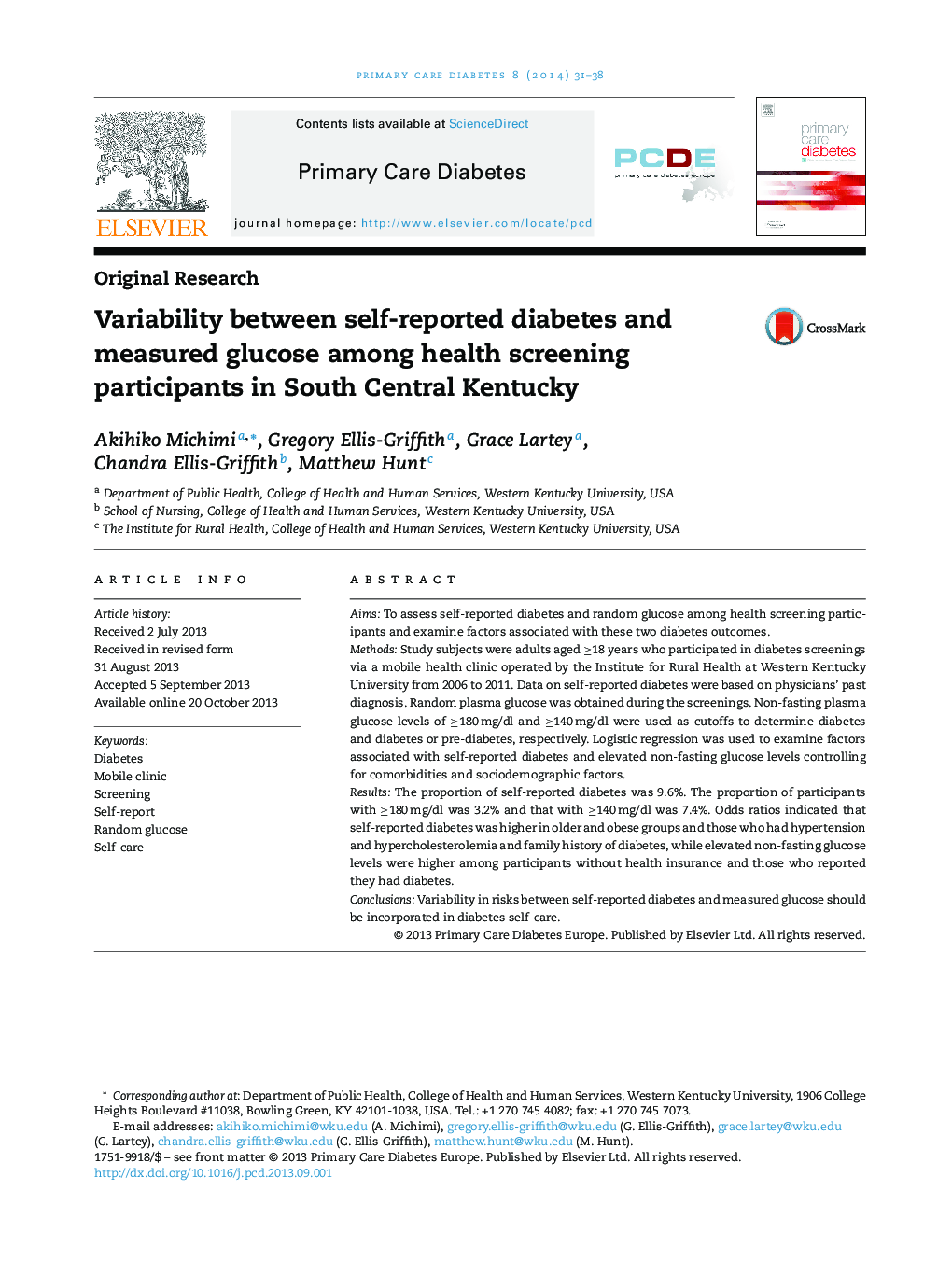| Article ID | Journal | Published Year | Pages | File Type |
|---|---|---|---|---|
| 5871130 | Primary Care Diabetes | 2014 | 8 Pages |
AimsTo assess self-reported diabetes and random glucose among health screening participants and examine factors associated with these two diabetes outcomes.MethodsStudy subjects were adults aged â¥18 years who participated in diabetes screenings via a mobile health clinic operated by the Institute for Rural Health at Western Kentucky University from 2006 to 2011. Data on self-reported diabetes were based on physicians' past diagnosis. Random plasma glucose was obtained during the screenings. Non-fasting plasma glucose levels of â¥180 mg/dl and â¥140 mg/dl were used as cutoffs to determine diabetes and diabetes or pre-diabetes, respectively. Logistic regression was used to examine factors associated with self-reported diabetes and elevated non-fasting glucose levels controlling for comorbidities and sociodemographic factors.ResultsThe proportion of self-reported diabetes was 9.6%. The proportion of participants with â¥180 mg/dl was 3.2% and that with â¥140 mg/dl was 7.4%. Odds ratios indicated that self-reported diabetes was higher in older and obese groups and those who had hypertension and hypercholesterolemia and family history of diabetes, while elevated non-fasting glucose levels were higher among participants without health insurance and those who reported they had diabetes.ConclusionsVariability in risks between self-reported diabetes and measured glucose should be incorporated in diabetes self-care.
